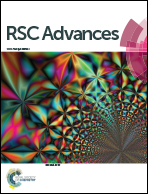Preservation of osteoblasts and BM-MSCs biological properties after consecutive passages with the thermal-liftoff method†
Abstract
Thermo-responsive surfaces based on PNIPAAm provide a novel way to harvest cells with temperature reduction. This cell harvest method makes cell membranes remain intact compared with enzymatic treatment. Nevertheless, it is unclear whether this alternative method tends to preserve cells' biological properties after consecutive passages in the long-term expansion. We constructed poly(N-isopropylacrylamide) (PNIPAAm)-grafted hollow fiber membranes (HFMs) with thermo-responsive properties. The osteoblasts and BM-MSCs of the second passage (P2) were cultured on both the thermo-responsive HFMs and glass coverslips, and then passaged with reducing temperature (thermal-liftoff) and enzymatic treatment. After such consecutive passages, the biological properties of the cells harvested by thermal-liftoff and trypsinization were analyzed and compared. The results showed that a higher viability and cellular proliferation were obtained when cells were detached using the thermal-liftoff method; alkaline phosphatase (ALP) activity and osteocalcin (OCN) protein expression of osteoblasts at P9 and BM-MSCs at P7 with thermal-liftoff were significantly higher than those with trypsinization; and more calcium nodules stained by Alizarin Red S were formed in thermal-liftoff groups. Additionally, for BM-MSCs, more glycosaminoglycan (GAG) was synthesized and secreted into the ECM after chondrogenic differentiation in the thermal-liftoff groups. Therefore, harvesting cells with the thermal-liftoff method is favorable to keep the functions of osteoblasts, and the osteogenic and chondrogenic differentiation of BM-MSCs. Besides, many more extracellular matrix (ECM) proteins remained around or within the cell membranes in the thermal-liftoff groups, which facilitates the preservation of osteoblasts and BM-MSCs' cellular activity, osteoblastic differentiation and mineralization. These results suggest that thermo-responsive HFMs and the matched thermal-liftoff method could be a candidate for harvesting more primitive therapeutic cells (osteoblasts and BM-MSCs) after consecutive passages.


 Please wait while we load your content...
Please wait while we load your content...